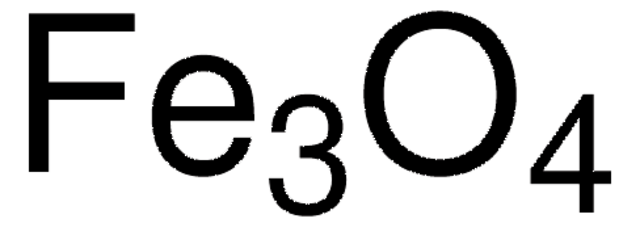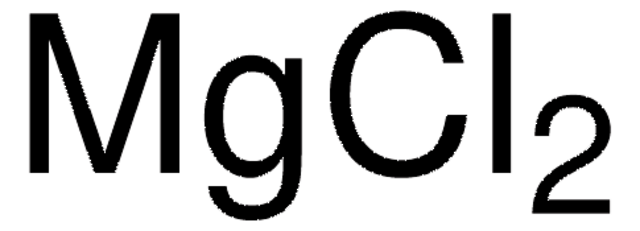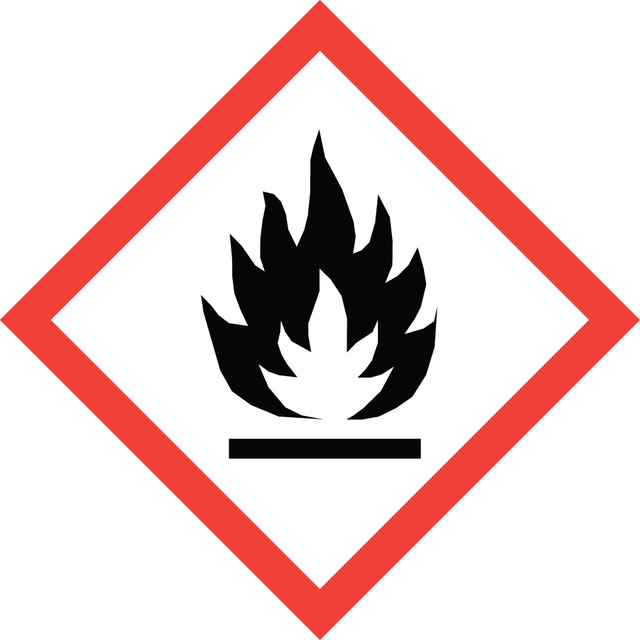추천 제품
Quality Level
분석
≥99%
양식
powder (fine)
품질
reduced
반응 적합성
core: iron
reagent type: catalyst
저항도
9.71 μΩ-cm
불순물
≤0.5% insoluble in HCl
bp
2750 °C (lit.)
mp
1535 °C (lit.)
density
7.86 g/mL at 25 °C (lit.)
음이온 미량물
chloride (Cl-): ≤20 mg/kg
sulfide (S2-): ≤100 mg/kg
양이온 미량물
As: ≤5 mg/kg
Cu: ≤100 mg/kg
Mn: ≤1000 mg/kg
Ni: ≤500 mg/kg
Pb: ≤20 mg/kg
Zn: ≤50 mg/kg
SMILES string
[Fe]
InChI
1S/Fe
InChI key
XEEYBQQBJWHFJM-UHFFFAOYSA-N
일반 설명
Reduced iron powder, also known as iron sponge, is a fine powdered form of iron that is commonly used in chemical synthesis processes. It is produced by the reduction of iron oxide in a controlled environment, typically through the use of hydrogen or carbon monoxide gas.
In chemical synthesis, reduced iron powder can be employed as a reducing agent, catalyst, or precursor in a wide range of reactions. It is commonly used to convert organic functional groups, such as aldehydes, ketones, and nitro compounds, into their corresponding reduced forms. It is also known to facilitate hydrogenation reactions.
Reduced iron powder finds applications in the production of iron-based catalysts, magnetic materials, pigments, and metal alloys. It is commonly used in pharmaceutical synthesis, organic chemistry, and industrial manufacturing. It is important to handle reduced iron powder with care due to its potential reactivity with moisture and oxygen, which may cause oxidation and result in changes to its properties. Proper storage and handling procedures should be followed to maintain its quality and prevent unwanted reactions.
In chemical synthesis, reduced iron powder can be employed as a reducing agent, catalyst, or precursor in a wide range of reactions. It is commonly used to convert organic functional groups, such as aldehydes, ketones, and nitro compounds, into their corresponding reduced forms. It is also known to facilitate hydrogenation reactions.
Reduced iron powder finds applications in the production of iron-based catalysts, magnetic materials, pigments, and metal alloys. It is commonly used in pharmaceutical synthesis, organic chemistry, and industrial manufacturing. It is important to handle reduced iron powder with care due to its potential reactivity with moisture and oxygen, which may cause oxidation and result in changes to its properties. Proper storage and handling procedures should be followed to maintain its quality and prevent unwanted reactions.
애플리케이션
- Sodium-Ion Batteries: Research demonstrated the use of iron-based Na(4)FeV(PO(4))(3) nanoparticles in pine pollen derived carbon matrices as a cost-effective cathode for sodium-ion batteries, emphasizing sustainable energy solutions and materials chemistry (Wang et al., 2024).
신호어
Danger
유해 및 위험 성명서
Hazard Classifications
Flam. Sol. 1 - Self-heat. 1
Storage Class Code
4.2 - Pyrophoric and self-heating hazardous materials
WGK
nwg
Flash Point (°F)
Not applicable
Flash Point (°C)
Not applicable
개인 보호 장비
Eyeshields, Gloves, type N95 (US)
자사의 과학자팀은 생명 과학, 재료 과학, 화학 합성, 크로마토그래피, 분석 및 기타 많은 영역을 포함한 모든 과학 분야에 경험이 있습니다..
고객지원팀으로 연락바랍니다.





